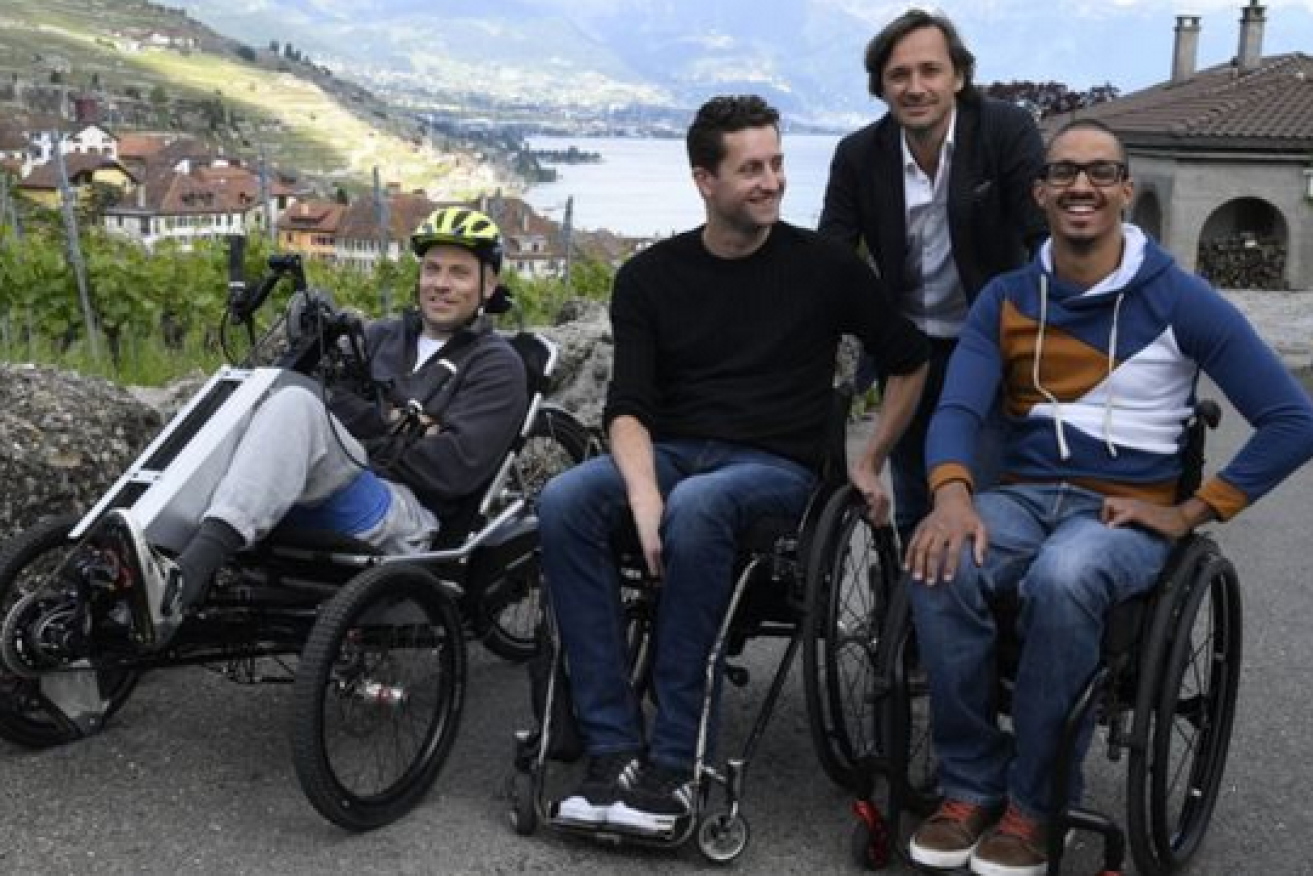Miracle implant lets paralysed patients take their first steps


Dr Grégoire Courtine shares a laugh with David M'zee (right) and his history-making patients. Photo: BBC
Spinal-injury survivors’ hopes are soaring after a remarkable research effort has helped three men rise from their wheelchairs and walk again.
The modern miracle is detailed in the latest issue of Nature,which describes how Swiss specialists implanted a revolutionary electronic device in the test subjects’ spines.
Not only did it see them take their first steps in years, the evidence strongly suggests the intensive course of electro-stimulation has helped shattered nerve connections to grow again.
Two of the patients were even able to walk short distances, albeit on crutches, after the stimulation units were switched off.
“I’m surprised at what we have been able to do,” said David M’zee, who was left paralysed in 2011 by a sporting mishap. After failing to respond to traditional rehabilitation techniques, doctors told him he was a hopeless case and would spend the rest of his life on wheels.
Today he takes strolls of up to half a mile by Lake Geneva.
“I think you’ve got to try the impossible to make the possible possible,” Mr M’zee told the BBC. “It’s a lot of fun – it feels really good.”
The breakthrough came when the research team decided to bring a fresh level of sophistication to an old idea. For decades doctors had experimented with electrical stimulation, but the gains in almost all cases were negligible.
Dr Grégoire Courtine’s team at the École Polytechnique Fédérale de Lausanne (EPFL) took a new tack.
Earlier stimulants were either ‘on’ or ‘off’ and delivered electrical jolts to all spinal neurons, the cells which transmit messages from brain to limbs and back again.
Rather than have the stimulator run constantly, the EPFL team designed a wireless system that delivered targeted pulses of electricity to specific neurons at precise times.
That approach was the breakthrough — although neurologists stress that Dr Courtine’s triumph is still years away from becoming a routine treatment.

The amazing device and its connections that is allowing the paralysed to work. Photo: EPFL
While subjects are delighted to regain a measure of mobility, the devices become annoyingly uncomfortable after extended use.
The other impediment to widespread use is the difficulty of implanting them, which in Mr M’zee’s case required the skills of Switzerland’s leading neuro surgeon.
Neither of those obstacles is cooling spinal specialists’ enthusiasm to develop the technique, however.
“Whether, in its current form, it is a plausible option for patients, is doubtful,” said Dr Mark Bacon, who heads Britain’s Spinal Research charity.
“But it demonstrates we have a workable model of what is required to stimulate regeneration and that, ultimately, paralysis is surmountable.”
Dr Bacon said he was particularly hopeful the device would confer greater benefits on victims of more recent spinal injuries, which afflict some 50,000 people every year around the world.








